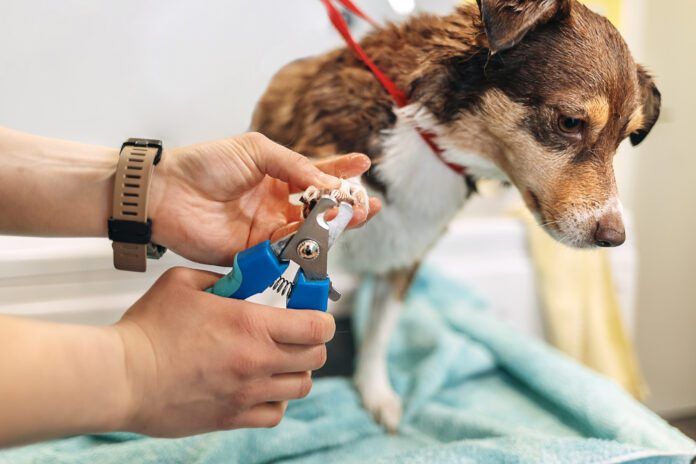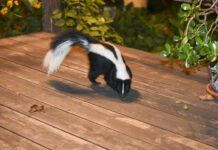If you cut your dog’s nail too close to the quick, it will bleed. For a dog’s bleeding nail, a dab of styptic powder will get the bleeding to stop. If styptic powder isn’t available, try some corn starch (see below) or apply pressure with a clean cloth or your finger to stop the bleeding. Talk to your dog in a slow, calm voice to calm her – a broken or bleeding nail is painful.
Styptic Powder for Dogs
Styptic powder (active ingredient ferric subsulfate) clots the blood and stops small bleeds. Simply apply the powder to the tip of a bleeding nail, and the nail will stop bleeding.
If you just nicked the quick, a small amount of powder will do the job. For more dramatic incidents, you might need to reapply powder several times. Most dogs tolerate styptic powder well, though some do react with discomfort as you apply it.
Silver nitrate sticks can also be used to stop dog nail bleeding, but they do sting so your dog likely won’t enjoy it.
Is Styptic Powder Safe for Dogs to Lick?
Licking up a small amount of styptic powder won’t harm your dog, but prevent her from consuming large amounts.
Homemade Styptic Powder for Dogs
If you don’t have styptic powder available, there are several household items you can use to help stop your dog’s nail from bleeding.
- Cornstarch, with or without baking soda and flour
- Ivory soap (press the nail into the bar of soap)
- Liquid bandage
None of these options work quite as quickly as styptic powder, but they will help in a pinch.
For the most optimal results when trimming your dog’s nails, be sure to use proper tools and be sure you understand proper nail length. Never hesitate to ask your veterinarian for advice on trimming your dog’s nails or the name of a good professional dog groomer.





